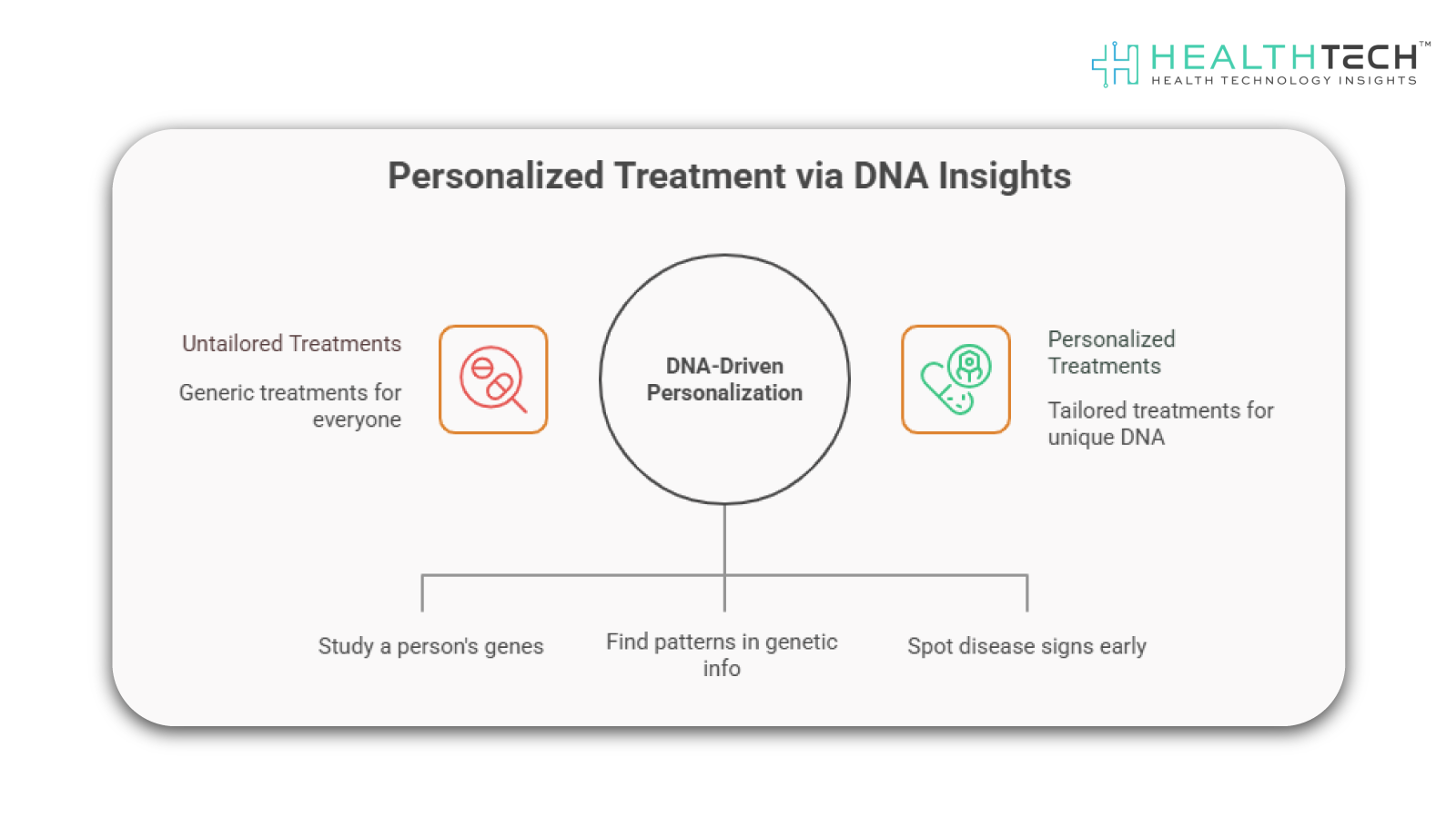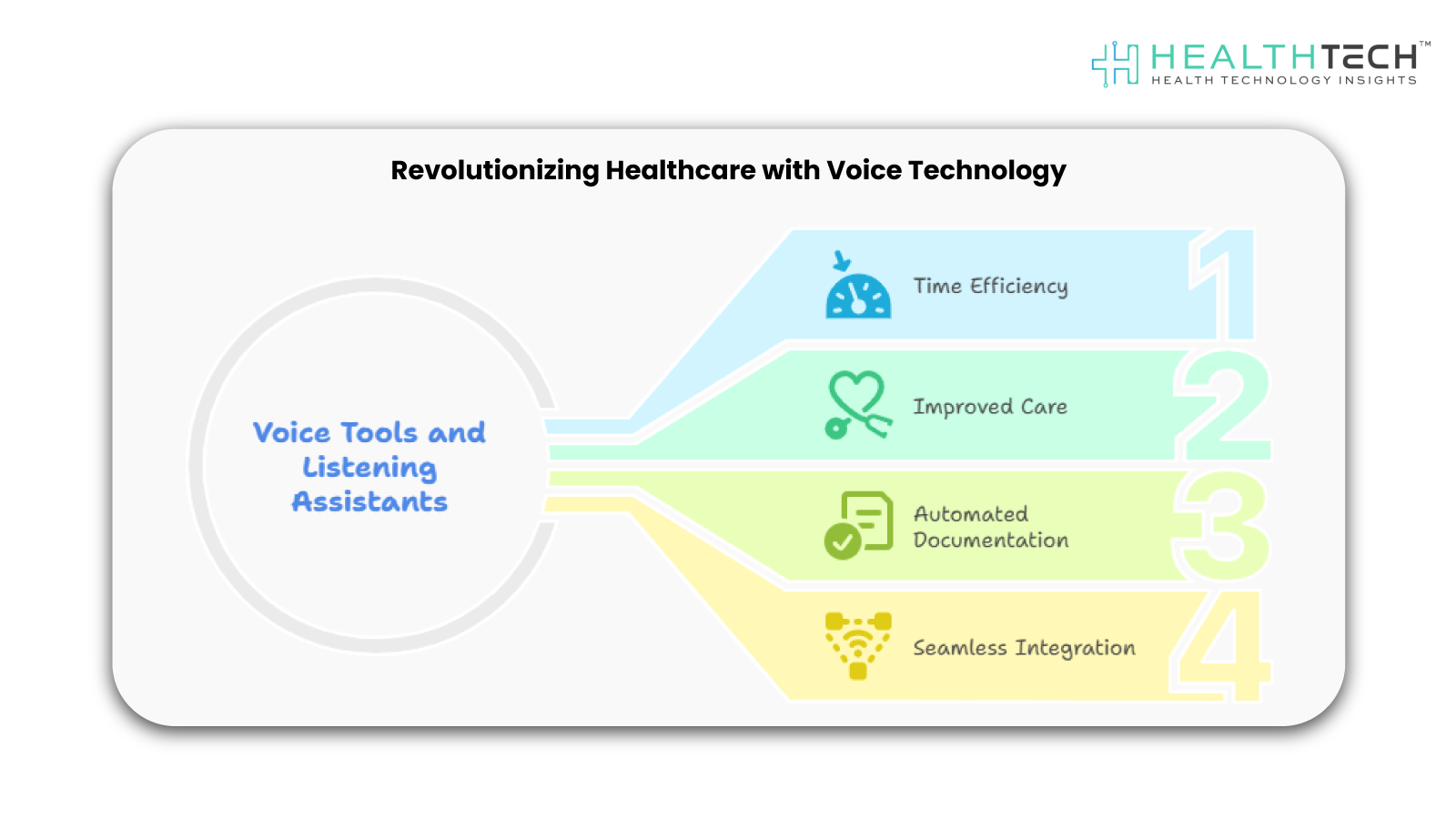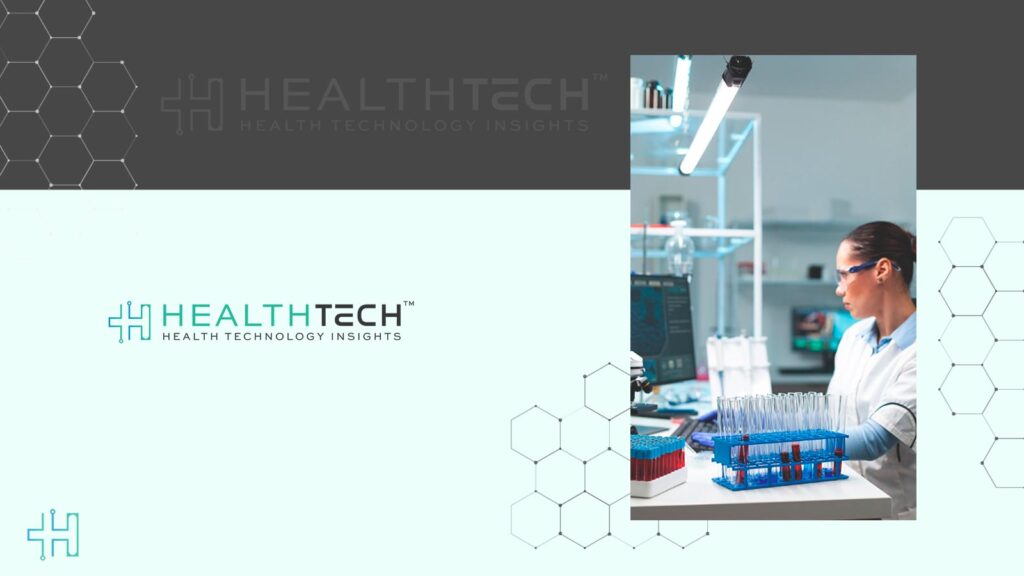Across the U.S., healthcare is changing fast. New tools are helping doctors, nurses, and hospitals do more with less. From smarter machines to digital records and faster testing, technology is playing a larger role than ever. In 2025, we’ll see major changes in how care is delivered, monitored, and planned.
This article explores the top tech trends that are already shaping patient care across the country. Whether you run a clinic or work in IT at a hospital, these are the trends you should know about this year.
1. Generative AI Helps Doctors Make Decisions
AI tools are now doing more than just organizing records. In 2025, doctors are starting to rely on AI to support care choices. These tools read charts, summarize patient details, and even help with writing clinical notes. Programs like Nuance DAX Copilot are being used in many health centers across the U.S.
Instead of replacing doctors, AI tools assist them. They cut down time spent on paperwork and let doctors focus on patient care. AI can also flag problems or suggest possible treatments – saving time and reducing mistakes.
Still, hospitals must be careful. Some tools may give wrong results or show bias. But the FDA is speeding up reviews for these systems, and hospitals are testing them with real patients. In 2025, we’ll see more trusted AI tools working side by side with U.S. healthcare teams.
2. Personalized Treatment with DNA Insights

Thanks to better testing, it’s now easier to study a person’s genes. That means doctors can now offer treatments tailored to a person’s unique DNA – not just their symptoms. In 2025, more hospitals will be using this approach, especially for treating cancer and rare diseases.
AI can now read genetic info quickly and find patterns that matter. That allows patients to receive more effective medications and not have to take ones that could cause them side effects. Clinics like Mayo and Mount Sinai are now using genetic data in medical records to make care faster and more personal.
Some tests, like liquid biopsies, can spot signs of disease early, even before symptoms appear. As these tests get quicker and cheaper, personalized medicine is set to grow across the U.S. in the coming years.
3. Remote Monitoring That Predicts Problems
In the past, wearable devices just tracked steps or heartbeats. In 2025, they’re much smarter. Now, they can spot health issues before a person notices symptoms. Smart patches, connected inhalers, and heart monitors are now linked to AI that alerts care teams when something looks wrong.
For example, tools like the BioSticker can detect breathing issues and flag risks early. Diabetes tools now give helpful tips to stay on track. Some devices even connect to hospitals, so data flows into the patient’s chart without delay.
Insurance providers and CMS are now covering more of these new technologies. That means people with chronic conditions like asthma or heart disease can often get better care from the comfort of their own homes
4. Hybrid Care: Virtual and In-Person Combined
Telehealth is here to stay. What started during the pandemic is now part of everyday care. In 2025, many clinics use a mix of video, phone, and in-office visits depending on what patients need.
Large platforms like Amazon Clinic and Teladoc offer full services without asking people to leave home. Mental health, urgent care, and follow-up visits can also be done online. Virtual rehab is even helping people recover after surgery with guided exercises that can be done from home.
Doctors are working across state lines more easily now, and insurers are paying for virtual visits like they do for in-person ones. These changes help clinics serve more people, save time, and lower costs – especially for those in rural parts of the U.S.
5. Cybersecurity Is a Growing Focus
With more patient data stored online, cyber threats are growing. In 2025, hospitals are making big moves to protect records from hacks, leaks, and scams. Many are switching to “zero-trust” systems, which double-check every device and login before allowing access.
AI tools can also scan for odd behavior – like someone trying to access many files fast and shut things down before damage is done. Big cloud companies now offer safer storage that meets health data rules.
New laws are pushing hospitals to fix weak spots and report problems fast. This year, every clinic and vendor must treat digital safety as a must-have, not a nice-to-have.
6. Voice Tools and Listening Assistants in Clinics

Doctors are talking more and typing less in 2025. Voice tools that listen and record clinic visits are helping save time and improve care. These systems can hear a visit, turn it into a chart note, and send it to the health record system – all without a doctor typing a word.
Tools like Nuance and Suki are already used by health systems across the country. This means less screen time and more patient time. Nurses and doctors can focus on people, not paperwork.
These systems also help cut errors. They hear medicine changes or warnings and remind care teams to follow up. With faster speech tech and smarter software, voice tools will likely become the norm in more clinics this year.
7. Predictive Tools for Early Action
Why wait for someone to get sick? That’s the idea behind predictive tools. These systems look at records, symptoms, and trends to warn when a problem might be coming. In 2025, these alerts will help care teams act sooner.
Hospitals like Kaiser and Geisinger use models that flag patients who may return to the ER or need special care after surgery. Some systems also track mood or pain changes to support mental health teams.
The goal is to move from reaction to prevention. These alerts help care teams offer the right help at the right time – cutting costs, reducing stress, and helping people stay healthy longer.
8. Blockchain for Secure Health Data Sharing
Blockchain isn’t just for money anymore. In 2025, it’s helping people take charge of their health records. It creates a safe and clear way to store and share data. Only the right people can see the files, and any changes are tracked step by step.
Patients can now give or deny access to their data in just a few taps. In clinical trials, blockchain helps people stay private while still sharing useful information. Startups are also using it to check if records are real and have not been changed.
Projects like MedRec are showing how this works in clinics and research. With more focus on data control and privacy, blockchain will likely play a bigger role in healthcare
The Future of Care Is Personal, Predictive, and Patient-First
What’s clear in 2025 is this: technology isn’t replacing care – it’s improving it. From better tools that help doctors to devices that help patients, these trends show how digital tools are making care faster, safer, and more personal. Clinics and systems that lean into these changes will be better prepared to meet rising patient needs. The time to adopt, test, and lead is now.
FAQs
1. What are the top healthcare technology trends in 2025?
Some of the top healthcare technology trends this year are AI in care, DNA-based treatment, remote monitoring, voice tools, and secure data systems.
2. How is AI used in clinics today?
AI helps write notes, track records, suggest treatments, and alert staff to potential problems before they escalate.
3. What makes it hard to use new health tech?
Costs, system limits, slow rules, and data safety are common issues that clinics and care teams face when trying new tools.
4. Is telehealth still growing?
Yes. Many clinics now use a mix of online and in-person sessions. Patients like the speed, and doctors can care for more people this way.
5. Which tools are making care better?
Smart devices, AI helpers, speech tools, DNA tests, and secure data systems all play key roles in better care this year.
Keep reading on Health Technology Insights.
To participate in our interviews, please write to our HealthTech Media Room at sudipto@intentamplify.com




